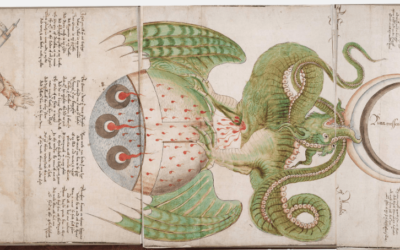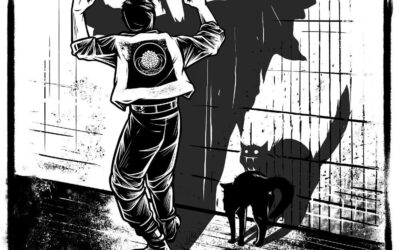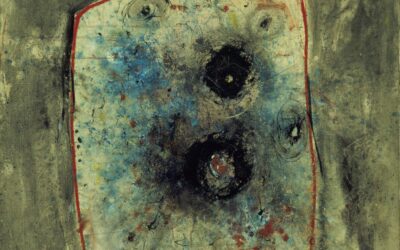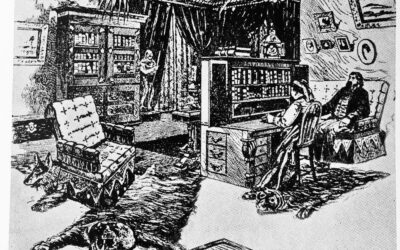
Alcohol Free Champagne Named after Carl Jung
Self-Help Exercise for Addiction Worksheet:
Disclaimer:
This self-help exercise worksheet is not a substitute for professional help. If you are struggling with addiction, please seek the guidance of a qualified therapist or addiction specialist. The exercises and information provided here are intended to complement, not replace, professional treatment.
Addiction Excercise :
This self-help exercise worksheet is designed to help you stop drinking by using techniques from Jungian psychology, Internal Family Systems (IFS), Voice Dialogue, Gestalt therapy, and other experiential therapies. The goal is to help you understand your addiction, identify the underlying causes, and develop strategies to overcome it. Remember, recovery is a journey, and it is essential to be patient, compassionate, and persistent with yourself throughout the process.
Understanding the Beebe Model and the Demon Archetype:
The Beebe model, developed by Jungian analyst John Beebe, is an extension of the Myers-Briggs Type Indicator (MBTI) that explores the deeper archetypal patterns within each personality type. According to this model, each individual has eight archetypal roles that influence their behavior and decision-making processes. These archetypes are divided into two groups: the “ego-syntonic” (or conscious) archetypes and the “ego-dystonic” (or unconscious) archetypes.
One of the ego-dystonic archetypes is known as the “Demon” or the “Daimonic.” This archetype represents the shadow side of our personality, the parts of ourselves that we fear, reject, or repress. The Demon archetype often holds the key to our deepest wounds and unresolved traumas, but it also contains the potential for tremendous growth and transformation.
In the context of addiction, the Demon archetype may manifest as the part of ourselves that feels powerless, unworthy, or self-destructive. It may drive us to seek comfort or escape through substance abuse, even when we know it’s harmful. By understanding and integrating this archetype, we can begin to heal the underlying wounds that fuel our addictive behaviors and develop a more compassionate and empowered relationship with ourselves.
Exercise: Exploring Your Demon Archetype
- – Take a moment to reflect on your addictive behavior and the emotions, thoughts, and beliefs that accompany it.
- – Imagine your Demon archetype as a separate entity or character. What does it look like? How does it behave? What does it say to you?
- – Write a letter from your Demon archetype to yourself, expressing its fears, pain, and unmet needs.
- – Respond to your Demon archetype with a letter from your conscious self, offering understanding, compassion, and support.
- – Reflect on how you can begin to integrate and heal the wounds represented by your Demon archetype, using the exercises and techniques outlined in this worksheet.
Step 1: Understand your addiction as a complex or sub-personality
In Jungian psychology, a complex or sub-personality is a part of your psyche that has its own beliefs, emotions, and goals. Your addiction can be seen as a complex, which the author calls “The Demon.” This Demon is not inherently bad but is misguided in its attempts to protect and help you. By understanding your addiction as a separate entity, you can begin to develop a more objective perspective on your behavior and motivations.
Exercise 1.1: Personify your Demon
– Imagine your addiction as a separate entity or character. Give it a name, describe its appearance, and consider its motivations.
– Write a dialogue between yourself and your Demon, exploring its beliefs about your addiction and how it thinks it’s helping you.
– Ask your Demon questions such as: “What are you trying to protect me from?” or “What do you need from me to feel safe?”
Exercise 1.2: Observe your Demon
– Throughout the day, pay attention to when your Demon appears or tries to influence your behavior.
– Notice any triggers, emotions, or thoughts that precede your Demon’s appearance.
– Keep a journal of these observations to help you identify patterns and gain insight into your addiction.
Step 2: Explore the origins of your addiction
Addictions often develop as a response to life experiences, particularly during adolescence and the transition into adulthood. Understanding the circumstances that led to your addiction can help you develop self-compassion and identify alternative coping strategies. By exploring your past, you can begin to heal old wounds and build a stronger foundation for recovery.
Exercise 2.1: Timeline exploration
– Create a timeline of your life, marking significant events and experiences related to your addiction.
– Reflect on how these experiences may have contributed to the development of your addiction.
– Consider the emotions, beliefs, and coping mechanisms you developed in response to these experiences.
Exercise 2.2: Inner child work
– Imagine yourself at the age when your addiction began. What were the challenges and unmet needs you experienced at that time?
– Write a letter from your adult self to your younger self, offering support, understanding, and guidance.
– Visualize your adult self comforting and nurturing your younger self, providing the love and support they needed.
Exercise 2.3: Family of origin exploration
– Reflect on your family dynamics and relationships during your childhood and adolescence.
– Consider how these dynamics may have influenced your emotional development and coping strategies.
– Identify any patterns or beliefs from your family of origin that may have contributed to your addiction.
Step 3: Engage in dialogue with your Demon
Using techniques from IFS and Voice Dialogue, engage in a conversation with your Demon to understand its perspective and negotiate a new relationship. By treating your Demon with compassion and respect, you can begin to transform your relationship with your addiction and develop healthier coping mechanisms.
Exercise 3.1: Voice Dialogue
– Set up two chairs facing each other. Sit in one chair as yourself and the other as your Demon.
– Switch between chairs, speaking as each part, to facilitate a dialogue between yourself and your Demon.
– Aim to understand your Demon’s concerns and find a way to work together towards recovery.
Exercise 3.2: Internal Family Systems exploration
– Identify other parts or sub-personalities within yourself that may be affected by your addiction, such as an “Inner Critic,” “Perfectionist,” or “Wounded Child.”
– Engage in a dialogue with these parts, exploring their perspectives and concerns.
– Consider how these parts may be contributing to or maintaining your addictive behavior.
Exercise 3.3: Negotiation and integration
– Based on your dialogues with your Demon and other parts, develop a plan for working together towards recovery.
– Create agreements or compromises that address the needs and concerns of each part while prioritizing your overall well-being.
– Visualize your parts working together harmoniously, supporting your journey towards a healthier, addiction-free life.
Step 4: Develop a new narrative
Using insights from Gestalt therapy, create a new narrative that emphasizes your ability to overcome addiction and lead a fulfilling life. By reframing your story, you can shift your focus from past struggles to future possibilities, empowering yourself to make positive changes.
Exercise 4.1: Rewriting your story
– Write a short story about your journey with addiction, focusing on your strengths, resilience, and the lessons you’ve learned.
– Imagine a future where you have successfully overcome your addiction. Describe what your life looks like and how you feel.
– Share your story with a trusted friend, family member, or therapist, and ask for their feedback and support.
Exercise 4.2: Challenging limiting beliefs
– Identify any limiting beliefs or negative self-talk that may be hindering your recovery, such as “I’m not strong enough” or “I’ll always be an addict.”
– Challenge these beliefs by examining the evidence for and against them.
– Replace limiting beliefs with empowering affirmations, such as “I am capable of change” or “I am worthy of a healthy, fulfilling life.”
Exercise 4.3: Envisioning a positive future
– Create a vision board or collage representing your life after overcoming addiction.
– Include images, quotes, and symbols that represent your values, goals, and aspirations.
– Place your vision board in a prominent location and spend time each day visualizing yourself living this positive future.
Step 5: Create a support system
Building a supportive network of friends, family, and professionals is crucial for long-term recovery. By surrounding yourself with people who understand and support your journey, you can create a strong foundation for lasting change.
Exercise 5.1: Identifying your support system
– List the people in your life who can support you in your recovery journey.
– Consider joining a support group or seeking professional help from a therapist specializing in addiction and the therapeutic approaches mentioned in this worksheet.
– Reach out to your support system regularly, sharing your progress, challenges, and successes.
Exercise 5.2: Setting boundaries
– Identify any relationships or situations that may trigger your addictive behavior or undermine your recovery.
– Develop a plan for setting healthy boundaries in these relationships or situations.
– Practice assertive communication when setting boundaries, expressing your needs clearly and respectfully.
Exercise 5.3: Cultivating self-care
– Create a list of self-care activities that nourish your physical, emotional, and spiritual well-being, such as exercise, meditation, or creative pursuits.
– Schedule regular time for self-care, treating it as a non-negotiable commitment to your recovery.
– Explore new hobbies or interests that promote a sense of meaning, purpose, and connection in your life.
Follow Up:
Overcoming addiction is a challenging but achievable goal. By understanding your addiction as a complex, exploring its origins, engaging in dialogue with your Demon, developing a new narrative, and creating a support system, you can break free from the cycle of addiction and lead a fulfilling life. Remember to be patient, compassionate, and persistent in your journey towards recovery. Celebrate your progress, learn from your setbacks, and trust in your ability to heal and grow.
As you work through this self-help exercise worksheet, remember that seeking professional guidance can provide invaluable support and insight. A qualified therapist or addiction specialist can help you navigate the complexities of recovery, offer personalized guidance, and provide a safe space for healing and growth.
In addition to the exercises outlined in this worksheet, consider exploring complementary practices such as mindfulness, yoga, or art therapy, which can support your recovery journey by promoting self-awareness, emotional regulation, and stress reduction.
Remember, recovery is not a linear process, and it is normal to experience ups and downs along the way. Be kind to yourself, celebrate your successes, and lean on your support system during challenging times. With dedication, self-compassion, and the right tools and support, you can overcome your addiction and create a life of meaning, purpose, and joy.
If you liked this read the articles on other Jungian topics:
Bibliography:
1. Beebe, J., & Falzeder, E. (2013). Integrity in Depth. A&C Black.
2. Bly, R. (2004). Iron John: A Book About Men. Da Capo Press.
3. Carr, A. (2004). The Easy Way to Stop Smoking. Sterling.
4. Gilmore, D. D. (1991). Manhood in the Making: Cultural Concepts of Masculinity. Yale University Press.
5. Glover, R. (2003). No More Mr. Nice Guy. Running Press.
6. Grace, A. (2018). This Naked Mind: Control Alcohol, Find Freedom, Discover Happiness & Change Your Life. Avery.
7. Johnston, R. A. (1986). Inner Work: Using Dreams and Active Imagination for Personal Growth. Harper & Row.
8. Moore, R., & Gillette, D. (1991). King, Warrior, Magician, Lover: Rediscovering the Archetypes of the Mature Masculine. HarperSanFrancisco.
9. Schwartz, R. (2021). No Bad Parts: Healing Trauma and Restoring Wholeness with the Internal Family Systems Model. Sounds True.
10. Stein, M. (1998). Jung’s Map of the Soul: An Introduction. Open Court.
11. von Franz, M.-L. (2000). The Problem of the Puer Aeternus. Inner City Books.
Further Reading:
1. Dodes, L. (2002). The Heart of Addiction: A New Approach to Understanding and Managing Alcoholism and Other Addictive Behaviors. HarperCollins.
2. Jung, C. G. (1966). Two Essays on Analytical Psychology (2nd ed.). Princeton University Press.
3. Kalsched, D. (2013). Trauma and the Soul: A Psycho-Spiritual Approach to Human Development and Its Interruption. Routledge.
4. Mate, G. (2010). In the Realm of Hungry Ghosts: Close Encounters with Addiction. North Atlantic Books.
5. Miller, A. (1997). The Drama of the Gifted Child: The Search for the True Self. Basic Books.
6. Naranjo, C. (1994). Character and Neurosis: An Integrative View. Gateways/IDHHB, Inc.
7. Perls, F. S., Hefferline, R. F., & Goodman, P. (1951). Gestalt Therapy: Excitement and Growth in the Human Personality. The Julian Press, Inc.
8. Singer, J. (1994). Boundaries of the Soul: The Practice of Jung’s Psychology. Anchor Books.
9. Woodman, M. (1982). Addiction to Perfection: The Still Unravished Bride. Inner City Books.
Read More Depth Psychology Articles:
Taproot Therapy Collective Podcast
Jungian Topics
How Psychotherapy Lost its Way
Therapy, Mysticism and Spirituality?
What Can the Origins of Religion Teach us about Psychology
The Major Influences from Philosophy and Religions on Carl Jung
How to Understand Carl Jung
How to Use Jungian Psychology for Screenwriting and Writing Fiction
How the Shadow Shows up in Dreams
Using Jung to Combat Addiction
Jungian Exercises from Greek Myth
Jungian Shadow Work Meditation
Free Shadow Work Group Exercise
Post Post-Moderninsm and Post Secular Sacred
The Origins and History of Consciousness
Jung’s Empirical Phenomenological Method
The Future of Jungian Thought
























0 Comments